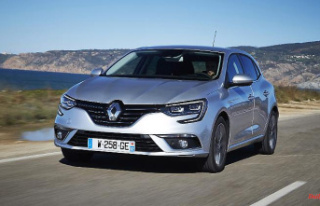The Ukraine war also triggers an energy crisis: Russia cuts off the gas and prices skyrocket. Because electricity is also generated from gas in Germany, electricity prices are also rising rapidly. But there are alternatives to gas-fired power plants.
Gas is an important source of energy for Germany. A quarter of all energy used comes from burning natural gas. Electricity is also generated from it, but this was relatively expensive even before the Ukraine war. With the shortage of supply volumes through Russia, the prices rise even higher. But why do you have to generate electricity from gas at all? And can't you do it differently?
There are alternatives to gas power plants. At the beginning of August, a first reserve coal-fired power plant in Lower Saxony was brought back to the electricity market. Germany also plans to switch to lignite-fired power plants later in the year to replace gas. However, coal-fired power plants have a significantly worse CO2 footprint: In comparison to natural gas, around twice as much CO2 is released.
Extending the service life of the last three nuclear power plants was also discussed. However, according to an analysis by the energy consultant Energy Brainpool, the potential for gas savings from nuclear power is low: According to this, the stretching operation could only replace one percent of the annual gas consumption.
The gas electricity is also mainly produced in power plants with so-called combined heat and power generation. This is the case for 600 of the approximately 700 gas-fired power plants in Germany. Part of the thermal energy produced is used as district heating. According to the Federal Ministry of Economics, 5.6 million apartments in Germany are heated with district heating.
And gas-fired power plants are also needed elsewhere: at all times, exactly as much electricity must be fed into the grid as is consumed - otherwise there will be power outages. However, wind and solar energy in particular fluctuate significantly depending on the weather and time of day. Gas-fired power plants can compensate for these fluctuations very well because they can be ramped up to peak performance within a few minutes. Coal and nuclear power plants are not well suited for this.
Pumped storage power plants are just as flexible as gas power plants. But there are too few of them - the installed capacity is only a quarter of that of gas-fired power plants. And you can't expand pumped storage power plants on a large scale, there aren't enough locations. And the power for that would have to come from somewhere. The provisional conclusion of the Federal Ministry of Economics at the beginning of August was: It is currently not possible to completely do without gas in power generation. Otherwise, the supply of consumers would be at risk.
But there are ways to reduce dependency on gas in the future. Saving electricity is one thing. Another expansion of renewable energy and energy storage, the other. Batteries in large systems, in electric cars and accumulators in residential buildings, which store electricity from photovoltaics, can be used as storage. So far, however, battery storage has only played a minor role. According to a report by the Federal Network Agency, less than one gigawatt of output was installed - only a fraction of the output of gas-fired power plants.
Another alternative to electricity from natural gas could be power-to-gas technology. Using electricity from renewable energies, water is split into oxygen and hydrogen by electrolysis. The "green hydrogen" in turn can also be converted into methane with CO2 - in principle the same as natural gas. In contrast, the synthetic fuel is CO2-neutral, but can also be converted into electricity in gas-fired power plants.
Another advantage of power-to-gas: The surpluses of wind and solar energy, which are becoming more common with the energy transition, can be used to produce the artificial fuel, which protects the power grid from overload. So far, wind turbines still have to be switched off as a last resort. According to the Federal Network Agency, around three percent of wind power was lost in 2021.
With power-to-gas, energy could finally be stored on a really large scale. For example in the existing large storage facilities, such as that in Rheden in Lower Saxony, the largest gas storage facility in Germany, which consists of a former gas field at a depth of 2000 meters. It can hold almost four billion cubic meters of natural gas, enough to supply two million single-family homes for a year.
But power-to-gas also has disadvantages: fuel produced in this way is currently significantly more expensive than fossil natural gas. However, should the cost of renewable energy and electrolysis continue to fall, power-to-gas could play a bigger role in the future. An analysis by Energy Brainpool predicts that green hydrogen will be able to compete with natural gas in terms of price by 2040 at the latest. With the recent record highs in gas prices, that might be the case even sooner.












